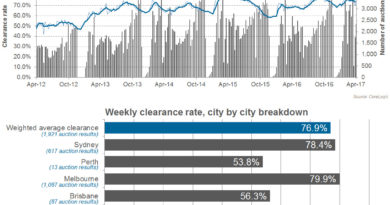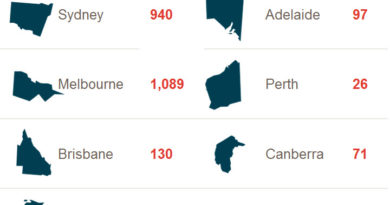Managing your property portfolio
updated 4th October 2016
Managing one investment property is relatively straightforward – but what do you need to consider once you buy your second, third or fourth property? Here’s how you can stay one step ahead of the game
Property management: DIY vs professionals
Many investors prefer to manage their properties themselves and retain control of the day-to-day running of their investments.
Managing your own portfolio means that you have to personally attend to the many needs of your properties – you’re the agent, the handyman, the lawyer, the bookkeeper, and the list goes on and on. By saving agent and management fees, you must collect the rent, pay the insurance, cut the grass, mend the broken window and generally do everything necessary to make sure your investment is ticking over.
There will always be unexpected demands on your time and your pocket, so if you think you’re incapable of managing the portfolio on your own, then enlisting a professional property manager is a must.
Eddy Failla, principal property manager with Laing and Simmons Drummoyne, says a professional manager will take care of all the day-to-day issues associated with a rental property – from screening tenants and collecting rent to carrying out property inspections.
A professional property manager also acts as a mediator between the tenant and the landlord, which can be important in situations where you need to raise the rent or evict a tenant. Failla says that investor “horror stories” involving tenants who severely damage a rental property frequently boil down to a dispute over rent.
“It usually comes down to an issue with rental arrears, where the tenant hasn’t paid rent and the landlord issues an eviction notice – and the tenant inflicts damage in revenge,” Failla explains.
While this doesn’t happen very often, Failla says it’s important that the landlord follows certain criteria before ejecting the tenant, or they could end up out of pocket for thousands of dollars. A property manager can assist in such situations by liaising between the two parties and making sure all legal guidelines are followed correctly.
A good property manager should not only take the stress out of managing a property, but should also be able to offer you a lower fee if you have all of your properties managed through one company.
“The fees are generally negotiable, regardless of how many properties you own, but you tend to have a little more buying power when you own more than one,” Failla says.
Property inspections
Ideally, property inspections should occur at least twice a year, or even more frequently if the lease term is shorter than six months.
“With a six-month lease, an inspection should be done after three months and then again at the end of the term,” Failla says.
He says that with a 12-month lease, an inspection is usually conducted after the first three months, and if everything is in order, the next inspection should be carried out six months later, with the final inspection at the end of the lease. Failla advises that landlords should ensure inspections are carried out at least every six months.
A property manager should conduct each routine inspection according to the time of lease and send the report to the owner directly after the inspection.
“If the owner identifies something in the report that they’re concerned about and they want to inspect the property themselves as a result, we can take them back through for an inspection,” Failla says.
As an investor managing several property interests, the best way to keep track of your various property inspections is to schedule reminders in your diary – so if your property manager doesn’t automatically conduct an inspection and send you the report, you can remind them to do so.
Investors should also try to personally inspect each of their property investments at least once a year, in addition to the scheduled inspections, so they can remain up to date about the overall condition of each property.
Property Insurance
As your property portfolio grows, so too does your exposure to liability. As an investor, it is your responsibility to take out adequate insurance cover so that your investment property – and your legal obligation towards the tenants occupying the premises – is protected.
Building insurance is required to cover replacement or repair costs in the event of damage to the structure of the building. If your investment is in a strata building, you may already pay this premium via your strata fees. The owner’s corporation insurance policy should also provide legal liability protection for all common areas, which covers the building as a whole if any person is injured on common property.
However, it is the individual lot owner’s responsibility to arrange legal liability and building contents cover for each apartment or townhouse.
Landlord insurance offers coverage if your tenant sustains an injury within your property, and also protects fittings that building insurance won’t cover, such as the stove, carpets and window coverings.
When shopping around for landlord insurance, investors should make sure they choose a comprehensive policy that will provide the best possible protection, says Carolyn Majda, marketing and operations manager with landlord insurance specialist Terri Scheer Insurance Brokers.
“The most common risks for a landlord are malicious damage by a tenant, theft, accidental damage, legal liability and loss of rental income,” Majda says. “Landlords should choose an insurance policy that has been specifically designed to address these needs.”
Majda says that research undertaken by Terri Scheer reveals that around 80% of landlords don’t have landlord insurance and up to one in six investment properties “will suffer either damage by tenants or loss of rental income”.
“Even the most fastidious tenant is able to damage a property, whether accidental or otherwise,” she warns. “This can be extremely costly for the landlord in terms of repairs and the loss of rental income, [so] seeking a specialised form of insurance cover can help to protect investors from the risks associated with owning a rental property.”
Majda also believes that prevention is better than cure, with careful tenant selection being an investor’s first line of defence.
“Property managers have exclusive access to national default registers that list tenants who have absconded or caused malicious damage,” Majda says. “This type of information is invaluable during the screening process.”
Maintenance
According to the NSW Office of Fair Trading, landlords are responsible for ensuring that premises are reasonably clean and fit to live in throughout the letting period. A similar rule applies throughout all states and territories across the nation.
This does not mean that the property must be rented out in perfect condition or that the landlord must immediately attend to every small matter during the tenancy; however, it does mean that the landlord is responsible for the general repair and upkeep of the property.
It’s important to budget for unexpected maintenance and repair expenses, particularly if you own multiple properties, as expenses often crop up at inconvenient times – for example, around Christmas or when you’ve just returned from an expensive overseas holiday.
One good strategy is to budget for around $20–30 per property per week, or $1,000–1,500 pa per property, for unforseen maintenance expenses. You may never need to use this money, but at least if you budget for it you’ll never be caught out.
Investors should note that the state of the property and the level of repair expected should be in proportion to the premises’ age and the amount of rent, according to the NSW Office of Fair Trading. Effectively, this means that a brand new house rented out for $450 per week will generate higher maintenance costs than a 20-year-old unit returning $150 per week – so keep this in mind when evaluating a potential investment property purchase.
Money matters
Tracey Imbuldenlya, finance consultant with brokerage firm Property Finance Online, says it’s important for investors to first set up a finance structure that will match their finance needs.
“Investors need to have a strategy in place to take advantage of opportunities that may arise and grow their portfolio,” Imbuldenlya says. “For example, trusts are a very common way for investors to purchase properties.”
Imbuldenlya says that setting up a trust requires additional paperwork, such as the trust deed, and the trustee will be required to guarantee the loan; but for a multiple-property owner, a trust offers asset protection that personal finance structures don’t provide.
The most common mistake Imbuldenlya sees investors make is cross-collateralising, which she says can disadvantage an investor “for many reasons”.
“Cross-collateralisation is securing more than two or more properties for one or more loans. The more properties, the more messy things can get,” Imbuldenlya says. “This usually doesn’t affect the investor immediately, but it can become a very expensive problem when there’s no choice but to start to unravel.”
Cross-collateralising ties up equity and can slow the growth of an investor’s portfolio, Imbuldenlya warns.
She says most problems arise when the investor wants to borrow against equity, purchase a new property or sell an investment property, because the property is already secured against another loan, which makes it difficult to access finance that would have otherwise been available.
Managing your finances
Whether you own one property or 21 properties, as an investor you should always be aware of your overall financial position. If you’re unaware, you might slow your portfolio’s growth by falsely believing you can’t afford another property – or worse, you may over-extend yourself financially.
To do this, it’s important to maintain a budget planner, either on your computer or in hard copy. Update it regularly with expenses and income for each investment property, and monitor the progress at regular intervals to ensure that any changes are reflected – for example, rental increases reflect changes in loan interest rates.
The end of the financial year will also be a nightmare if you don’t manage your records along the way. An easy way to do this is to buy one folder for each property and file all relevant receipts, rate renewals, rental notices and bank statements. Keeping all of these records in one place expedites the process of filing your tax return and helps to ensure that you deduct every available expense.
This article has been republished with permission from Your Investment Property magazine. Try our Loan Repayment Calculator and find the best repayment strategy for you.




